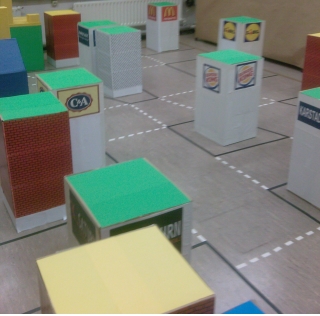Route-Based Humanoid Robot Navigation

A more natural interaction between humans and mobile robots can be achieved by bridging the gap between the format of spatial knowledge used by robots and the format of languages used by humans. This enables both of them to communicate by using shared knowledge. Spatial knowledge can be (re)presented in various ways to increase the interaction between humans and mobile robots. One of effective way is by describing the route verbally to the robot. This method can lead to control mobile robots, which understand spatial descriptions, by computer language-naive users to naturally perform complex tasks using succinct and intuitive commands. We are implementing an instruction language to describe route-based navigation tasks for a humanoid robot. The instructions of this spatial language are implemented to provide an intuitive interface that will be easy and natural for novice users to describe a navigation task for a mobile robot in a miniature city or in any other indoor environments. In our system, the instructions of the processed route description are analyzed to motion actions and spatial relationships via the command interpreter stage. The lexicon, which is implemented in the command interpreter stage, is defined in terms of the basic robot motion operations and it represents the mapping between route instructions and main navigational actions. Perceptual anchoring is used to ground the resulted motion actions and spatial relationships with the robot main actuator procedures.The navigation process is executed in a miniature city which was built on a 5m x 3.2m area.(for more details).

